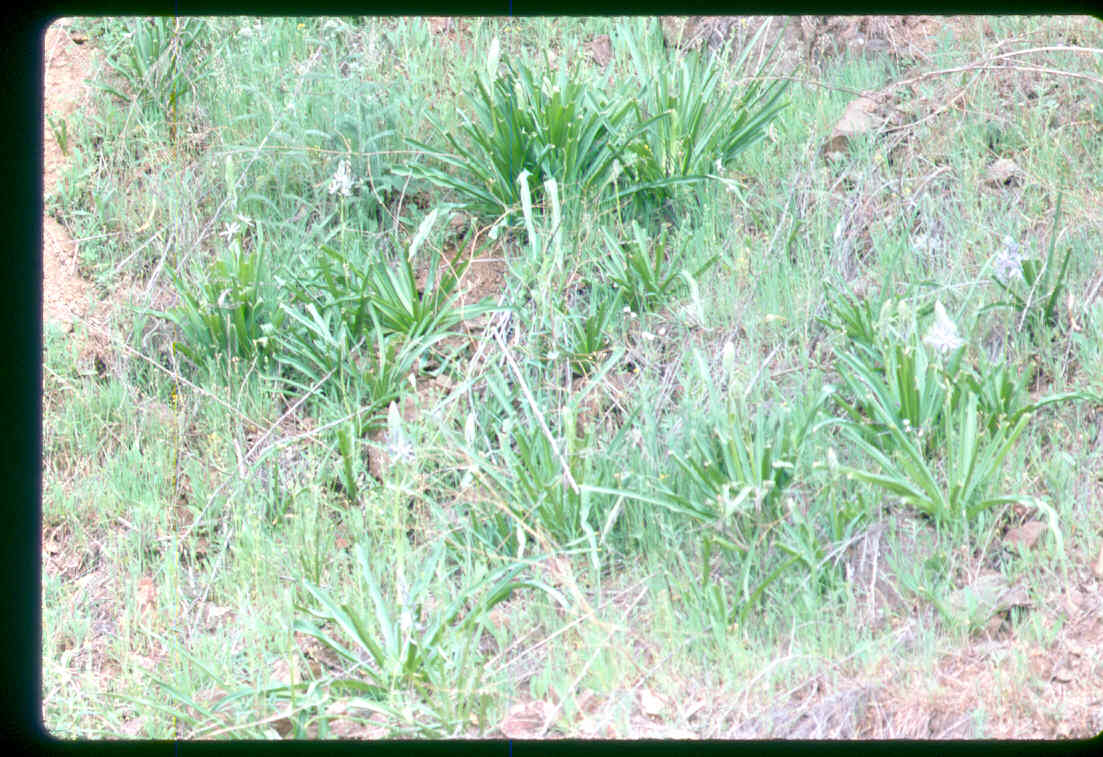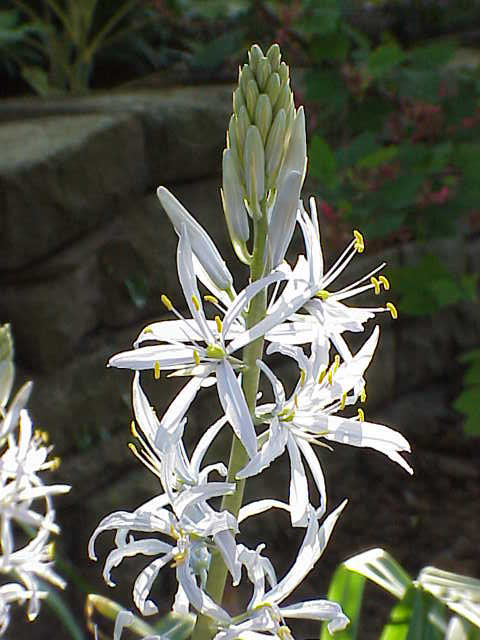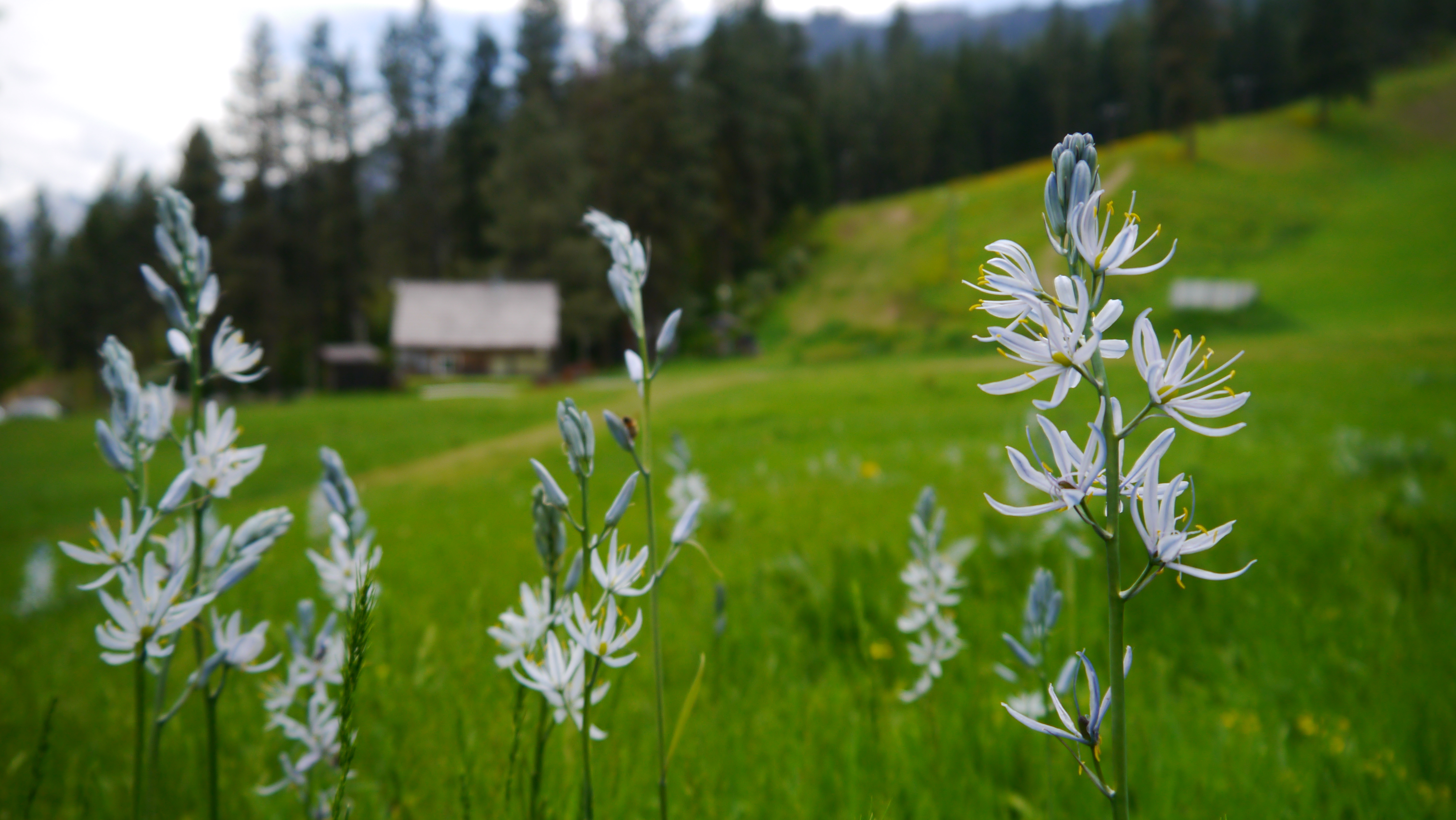|
Camassia Cusickii
''Camassia cusickii'', common name Cussick's camas, is a species of plant in the family Asparagaceae (subfamily Agavoideae). It is native to parts of North America. ''C. cusickii'' originally appeared in horticultural journals in the late 1800s, but they been sold and cultivated for about thirty years. This plant family is not studied intensely. Seven or eight species exist in the wild, however, only three are talked about and cultivated. Description The ''Camassia cusickii'' has linear leaves with parallel venation and flowers in parts of three. The flowers are usually ice blue or baby blue in color, although they can be various shades of blue, cream, and white. The flowers are slightly zygomorphic with the tepals withering separately after anthesis (baby blue in color). C. cusickii has yellow anthers and a fruiting pedicel incurving-erect or slightly spreading. The capsules are not deciduous, light brown in color, having an ovoid or ellipsoid shape. The flowers in the wild hav ... [...More Info...] [...Related Items...] OR: [Wikipedia] [Google] [Baidu] |
Sereno Watson
Sereno Watson (December 1, 1826 in East Windsor Hill, Connecticut – March 9, 1892 in Cambridge, Massachusetts) was an American botanist. Graduating from Yale in 1847 in Biology, he drifted through various occupations until, in California, he joined the Clarence King Expedition and eventually became its expedition botanist. Appointed by Asa Gray as assistant in the Gray Herbarium of Harvard University in 1873, he later became its curator, a position he maintained until his death. Watson was elected a Fellow of the American Academy of Arts and Sciences in 1874, and a member of the National Academy of Sciences in 1889. Works * ''Botany'', in ''Report of the geological exploration of the 40th parallel made ... by Clarence King'', 1871 * * Publications by and about S. Watsoon WorldCat References External linksBiographical sketch at the Gray Herbarium site [...More Info...] [...Related Items...] OR: [Wikipedia] [Google] [Baidu] |
Raceme
A raceme ( or ) or racemoid is an unbranched, indeterminate type of inflorescence bearing flowers having short floral stalks along the shoots that bear the flowers. The oldest flowers grow close to the base and new flowers are produced as the shoot grows in height, with no predetermined growth limit. Examples of racemes occur on mustard (genus ''Brassica'') and radish (genus ''Raphanus'') plants. Definition A ''raceme'' or ''racemoid'' is an unbranched, indeterminate type of inflorescence bearing pedicellate flowers (flowers having short floral stalks called ''pedicels'') along its axis. In botany, an ''axis'' means a shoot, in this case one bearing the flowers. In indeterminate inflorescence-like racemes, the oldest flowers grow close to the base and new flowers are produced as the shoot grows in height, with no predetermined growth limit. A plant that flowers on a showy raceme may have this reflected in its scientific name, e.g. the species ''Cimicifuga racemosa''. A compou ... [...More Info...] [...Related Items...] OR: [Wikipedia] [Google] [Baidu] |
Flora Of Oregon
This is a list of plants by common name that are native to the U.S. state of Oregon. * Adobe parsley * Alaska blueberry * American wild carrot * Austin's popcornflower * Awned melic *Azalea * Azure penstemon * Baby blue eyes * Baldhip rose * Beach strawberry * Beach wormwood * Bearded lupine *Bensoniella *Bigleaf maple * Bigleaf sedge * Birdnest buckwheat * Birthroot, western trillium *Bitter cherry * Bleeding heart * Blow-wives * Blue elderberry *Bog Labrador tea * Bolander's lily * Bridges' cliffbreak * Brook wakerobin * Brown dogwood * Buckbrush * Bugle hedgenettle * Bunchberry * California broomrape * California buttercup * California canarygrass *California goldfields * California milkwort * California phacelia * California stoneseed *California wild rose * Camas * Canary violet * Canyon gooseberry * Cascara * Castle Lake bedstraw * Charming centaury * Chinese caps * Citrus fawn lily * Coastal cryptantha * Coastal sand-verbena * Coastal sneezeweed * Coastal woodfern * Co ... [...More Info...] [...Related Items...] OR: [Wikipedia] [Google] [Baidu] |
Flora Of Idaho
Flora is all the plant life present in a particular region or time, generally the naturally occurring (indigenous) native plants. Sometimes bacteria and fungi are also referred to as flora, as in the terms '' gut flora'' or '' skin flora''. Etymology The word "flora" comes from the Latin name of Flora, the goddess of plants, flowers, and fertility in Roman mythology. The technical term "flora" is then derived from a metonymy of this goddess at the end of the sixteenth century. It was first used in poetry to denote the natural vegetation of an area, but soon also assumed the meaning of a work cataloguing such vegetation. Moreover, "Flora" was used to refer to the flowers of an artificial garden in the seventeenth century. The distinction between vegetation (the general appearance of a community) and flora (the taxonomic composition of a community) was first made by Jules Thurmann (1849). Prior to this, the two terms were used indiscriminately.Thurmann, J. (1849). ''Essai de P ... [...More Info...] [...Related Items...] OR: [Wikipedia] [Google] [Baidu] |
Camassia Scilloides
''Camassia scilloides'' is a perennial herb known commonly as Atlantic camas, wild hyacinth,''Camassia scilloides''. NatureServe. 2012. and eastern camas.''Camassia scilloides''. Flora of North America. It is native to the eastern half of North America, including and the eastern United States. Description The species produces s up ...[...More Info...] [...Related Items...] OR: [Wikipedia] [Google] [Baidu] |
Haarlem
Haarlem (; predecessor of ''Harlem'' in English) is a city and municipality in the Netherlands. It is the capital of the province of North Holland. Haarlem is situated at the northern edge of the Randstad, one of the most populated metropolitan areas in Europe; it is also part of the Amsterdam metropolitan area, being located about 15 km to the west of the core city of Amsterdam. Haarlem had a population of in . Haarlem was granted city status or '' stadsrechten'' in 1245, although the first city walls were not built until 1270. The modern city encompasses the former municipality of Schoten as well as parts that previously belonged to Bloemendaal and Heemstede. Apart from the city, the municipality of Haarlem also includes the western part of the village of Spaarndam. Newer sections of Spaarndam lie within the neighbouring municipality of Haarlemmermeer. Geography Haarlem is located on the river Spaarne, giving it its nickname 'Spaarnestad' (Spaarne city). It is situated a ... [...More Info...] [...Related Items...] OR: [Wikipedia] [Google] [Baidu] |
Zwanenburg
Zwanenburg () is a town in the Dutch province of North Holland. It is a part of the municipality of Haarlemmermeer, and lies about 11 km west of Amsterdam. Zwanenburg has a population of around 7,670.Statistics Netherlands (CBS), ''Gemeente Op Maat 2004: Haarlemmermeer' History Zwanenburg takes its name from Gemeenlandshuis Zwanenburg, the former headquarters of the Hoogheemraadschap Rijnland, a water board that used to have its headquarters in Halfweg, on the other side of the canal known today as the Ringvaart. Up until the 19th century, Zwanenburg was under water. When the pumping station at Halfweg had succeeded in making the land ripe for building, the workers who had settled at Halfweg purchased this cheap land below the dike for their homes. The infrastructure linking Halfweg to Haarlem and Amsterdam was already quite good, so Zwanenburg became a true commuter town. Halfweg was also the site of a large sugar factory, first opened in 1863, that served as an employer ... [...More Info...] [...Related Items...] OR: [Wikipedia] [Google] [Baidu] |
Camassia Cusickii3
''Camassia'' is a genus of plants in the asparagus family native to North America. Common names include camas, quamash, Indian hyacinth, camash, and wild hyacinth. It grows in the wild in great numbers in moist meadows. They are perennial plants with basal linear leaves measuring in length, which emerge early in the spring. They grow to a height of , with a multi-flowered stem rising above the main plant in summer. The six-petaled flowers vary in color from pale lilac or white to deep purple or blue-violet. Camas can appear to color entire meadows when in flower. Taxonomy and species Historically, the genus was placed in the lily family (Liliaceae), when this was very broadly defined to include most lilioid monocots., in When the Liliaceae was split, in some treatments ''Camassia'' was placed in a family called Hyacinthaceae (now the subfamily Scilloideae). DNA and biochemical studies have led the Angiosperm Phylogeny Group to reassign ''Camassia'' to the family Asparagac ... [...More Info...] [...Related Items...] OR: [Wikipedia] [Google] [Baidu] |
Camassia Cusickii Plants In SW Idaho
''Camassia'' is a genus of plants in the asparagus family native to North America. Common names include camas, quamash, Indian hyacinth, camash, and wild hyacinth. It grows in the wild in great numbers in moist meadows. They are perennial plants with basal linear leaves measuring in length, which emerge early in the spring. They grow to a height of , with a multi-flowered stem rising above the main plant in summer. The six-petaled flowers vary in color from pale lilac or white to deep purple or blue-violet. Camas can appear to color entire meadows when in flower. Taxonomy and species Historically, the genus was placed in the lily family (Liliaceae), when this was very broadly defined to include most lilioid monocots., in When the Liliaceae was split, in some treatments ''Camassia'' was placed in a family called Hyacinthaceae (now the subfamily Scilloideae). DNA and biochemical studies have led the Angiosperm Phylogeny Group to reassign ''Camassia'' to the family Asparagac ... [...More Info...] [...Related Items...] OR: [Wikipedia] [Google] [Baidu] |
Peony
The peony or paeony is a flowering plant in the genus ''Paeonia'' , the only genus in the family Paeoniaceae . Peonies are native to Asia, Europe and Western North America. Scientists differ on the number of species that can be distinguished, ranging from 25 to 40, although the current consensus is 33 known species. The relationships between the species need to be further clarified. Most are herbaceous perennial plants tall, but some are woody shrubs tall. They have compound, deeply lobed leaves and large, often fragrant flowers, in colors ranging from purple and pink to red, white or yellow, in late spring and early summer. The flowers have a short blooming season, usually only 7–10 days. Peonies are popular garden plants in temperate regions. Herbaceous peonies are also sold as cut flowers on a large scale, although generally only available in late spring and early summer. Description Morphology All Paeoniaceae are herbaceous perennials or deciduous shrubs, with t ... [...More Info...] [...Related Items...] OR: [Wikipedia] [Google] [Baidu] |
Dianthus Barbatus
''Dianthus'' () is a genus of about 340 species of flowering plants in the family Caryophyllaceae, native mainly to Europe and Asia, with a few species in north Africa and in southern Africa, and one species (''D. repens'') in arctic North America. Common names include carnation (''D. caryophyllus''), pink (''D. plumarius'' and related species) and sweet william (''D. barbatus''). Description The species are mostly herbaceous perennials, a few are annual or biennial, and some are low subshrubs with woody basal stems. The leaves are opposite, simple, mostly linear and often strongly glaucous grey green to blue green. The flowers have five petals, typically with a frilled or pinked margin, and are (in almost all species) pale to dark pink. One species, ''D. knappii'', has yellow flowers with a purple centre. Some species, particularly the perennial pinks, are noted for their strong spicy fragrance. Species Selected species include: Hybrids include; * 'Devon Xera' – Fir ... [...More Info...] [...Related Items...] OR: [Wikipedia] [Google] [Baidu] |
Humus
In classical soil science, humus is the dark organic matter in soil that is formed by the decomposition of plant and animal matter. It is a kind of soil organic matter. It is rich in nutrients and retains moisture in the soil. Humus is the Latin word for "earth" or "ground". In agriculture, "humus" sometimes also is used to describe mature or natural compost extracted from a woodland or other spontaneous source for use as a soil conditioner. It is also used to describe a topsoil horizon that contains organic matter (''humus type'', ''humus form'', or ''humus profile''). Humus has many nutrients that improve the health of soil, nitrogen being the most important. The ratio of carbon to nitrogen (C:N) of humus commonly ranges between eight and fifteen with the median being about twelve. It also significantly affects the bulk density of soil. Humus is amorphous and lacks the "cellular cake structure characteristic of plants, micro-organisms or animals". Description The primary ... [...More Info...] [...Related Items...] OR: [Wikipedia] [Google] [Baidu] |







